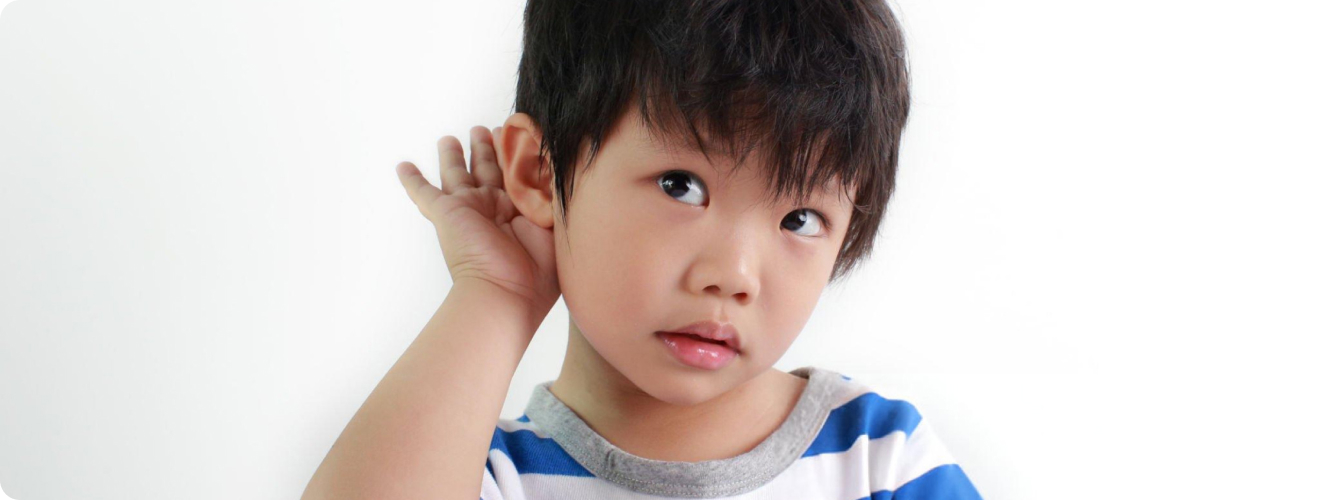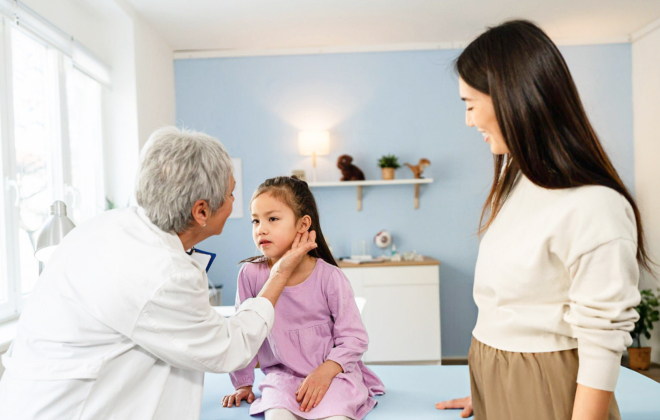


Microtia is a congenital deformity affecting the development of the outer ear. The severity of this condition varies, but it can significantly impact hearing and facial symmetry. Thus, early diagnosis and intervention are paramount in managing its effects.
Paediatric Microtia is a congenital condition where a child is born with an underdeveloped or missing outer ear (pinna), which may affect hearing and facial symmetry. It can occur in one ear (unilateral microtia) or both ears (bilateral microtia) and is often associated with aural atresia (absence of the ear canal).
This condition varies in severity and is classified into four grades:
Grade 1 microtia is the mildest form and often does not significantly impact hearing. However, in more severe cases, children may experience conductive hearing loss due to the absence of an ear canal.
One of the most common concerns among parents is whether microtia is considered a disability. The answer depends on the severity and its impact on hearing.
In many countries, microtia is not classified as a disability unless it significantly impairs hearing and communication. However, children with severe hearing loss may qualify for special support services in school.
The exact cause of microtia isn’t always clear, but several factors may contribute to its development:
In certain instances, microtia can be hereditary, indicating a potential genetic connection. Specific gene mutations or inherited conditions may elevate the likelihood of developing this condition.
Exposure to harmful substances during pregnancy, such as:
A major cause of microtia is nutrient interruptions in early pregnancy. Expectant mothers should maintain a healthy diet to reduce the risk of this congenital deformity.
Microtia is sometimes linked to genetic syndromes, such as:
We have discussed more about these conditions in a later segment.
Many cases of microtia occur randomly without any identifiable cause. It is not typically preventable and can happen even in healthy pregnancies.
Microtia is usually a sporadic condition, meaning it occurs without a clear family history. However, in some cases, it may be inherited. Studies suggest that about 5-10% of microtia cases have a genetic component.
Certain inherited syndromes, such as Treacher Collins Syndrome and Goldenhar Syndrome, can include microtia as one of their features. If there is a family history of microtia or related conditions, genetic counselling can help assess the risk of recurrence in future pregnancies.
Microtia primarily affects hearing due to its impact on the external and middle ear structures. The severity of hearing loss depends on the degree of ear malformation and whether one or both ears are affected.
Microtia is often associated with atresia, a condition where the ear canal is either completely absent or abnormally narrow. This prevents sound waves from reaching the middle and inner ear properly, leading to conductive hearing loss.
In most cases, the inner ear (cochlea) functions normally, meaning the auditory nerve can still process sound if properly transmitted. This is why bone-conduction hearing aids or implantable devices can be effective treatments.
Children with untreated hearing loss may face speech delays, difficulty distinguishing sounds, and challenges in school settings. Early intervention with hearing aids, speech therapy, and assistive listening devices can help minimise these effects.
Let’s talk solutions now. The treatment of microtia depends on the severity of the ear deformity, the presence of hearing loss, and the child’s overall health. While some children with mild microtia may not require intervention, others may benefit from reconstructive surgery, hearing devices, or both.
Since microtia is often associated with conductive hearing loss, early intervention is crucial for speech and language development.
Reconstructive surgery is an option for improving cosmetic appearance and, in some cases, enhancing hearing. It is usually performed after age 6-10 when the ear has grown sufficiently.
Surgery to create an ear canal and eardrum is typically recommended for children who have well-developed middle ear structures. The success rate of this procedure can vary, and in some cases, hearing aids may still be required post-surgery.
Regular hearing tests and speech therapy are essential for promoting language development. Additionally, classroom accommodations such as FM systems can greatly enhance sound perception in noisy environments. These interventions play a crucial role in supporting individuals with hearing impairments to effectively communicate and engage in educational settings.
Microtia can affect a child’s self-esteem, social interactions, and emotional well-being, especially as they grow and become more aware of their appearance and hearing challenges.
Children with microtia may feel self-conscious about their appearance, especially during school years when they may face teasing. However, having a supportive family and peer environment can help them build confidence.
Group conversations can be challenging for people with hearing loss, leading to frustration and potential for bullying or social exclusion which can cause emotional distress. Encouraging open discussions and practising social skills can help improve coping mechanisms in these situations.
Hearing loss can cause problems with speech development and communication, as well as difficulties in the classroom. Early intervention with speech therapy and hearing devices can make a positive difference.
Parents may experience stress and guilt regarding their child’s well-being as a result of microtia. Engaging with support groups and seeking emotional support can help address these emotions.
Counselling and peer support groups play a crucial role in assisting children who struggle with self-image issues by providing them with a sense of community and fostering a positive and resilient mindset. These resources offer a safe space for children to connect with others who may be facing similar challenges, ultimately helping them build confidence and develop coping strategies.

Paediatric microtia is a unique condition affecting both hearing and facial development. While it may not always be classified as a disability, it can impact a child’s quality of life depending on its severity. Early diagnosis, appropriate treatment, and emotional support can help children with microtia lead confident, fulfilling lives.
If you are a parent seeking treatment options, consult an ENT specialist or plastic surgeon to explore the best course of action for your child.
Microtia in a child is caused by genetic factors, environmental influences, or vascular disruptions during early foetal development.
The protocol for microtia includes early diagnosis, hearing assessment, use of hearing aids if needed, and consideration of surgical or prosthetic reconstruction based on the child’s needs.
Paediatric microtia is associated with syndromes like Treacher Collins, Goldenhar, Hemifacial Microsomia, Nager, Miller, and BOR (Branchio-Oto-Renal) Syndrome.
Sources:
Spread the love, follow us on our social media channels